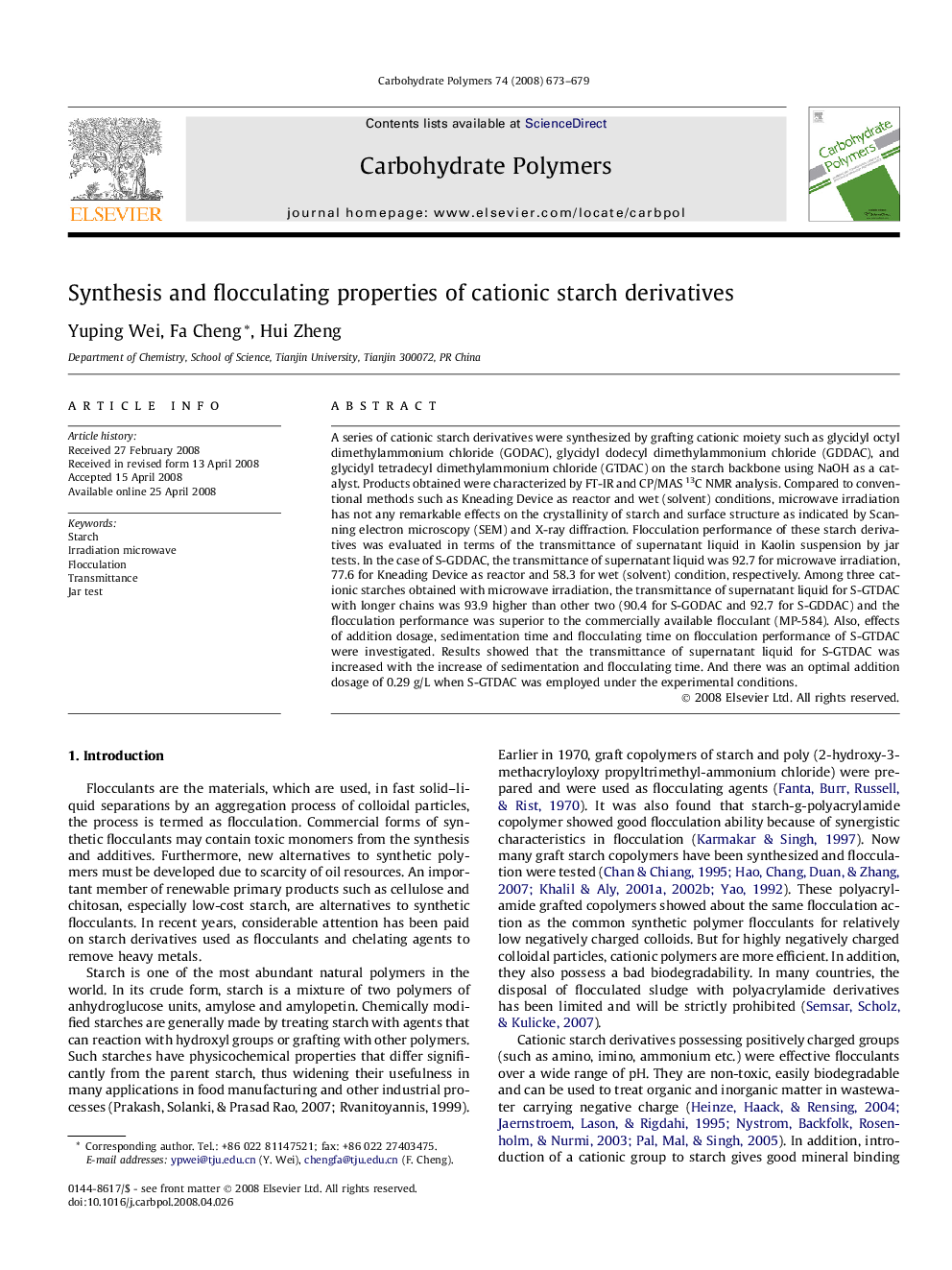| Article ID | Journal | Published Year | Pages | File Type |
|---|---|---|---|---|
| 1386441 | Carbohydrate Polymers | 2008 | 7 Pages |
A series of cationic starch derivatives were synthesized by grafting cationic moiety such as glycidyl octyl dimethylammonium chloride (GODAC), glycidyl dodecyl dimethylammonium chloride (GDDAC), and glycidyl tetradecyl dimethylammonium chloride (GTDAC) on the starch backbone using NaOH as a catalyst. Products obtained were characterized by FT-IR and CP/MAS 13C NMR analysis. Compared to conventional methods such as Kneading Device as reactor and wet (solvent) conditions, microwave irradiation has not any remarkable effects on the crystallinity of starch and surface structure as indicated by Scanning electron microscopy (SEM) and X-ray diffraction. Flocculation performance of these starch derivatives was evaluated in terms of the transmittance of supernatant liquid in Kaolin suspension by jar tests. In the case of S-GDDAC, the transmittance of supernatant liquid was 92.7 for microwave irradiation, 77.6 for Kneading Device as reactor and 58.3 for wet (solvent) condition, respectively. Among three cationic starches obtained with microwave irradiation, the transmittance of supernatant liquid for S-GTDAC with longer chains was 93.9 higher than other two (90.4 for S-GODAC and 92.7 for S-GDDAC) and the flocculation performance was superior to the commercially available flocculant (MP-584). Also, effects of addition dosage, sedimentation time and flocculating time on flocculation performance of S-GTDAC were investigated. Results showed that the transmittance of supernatant liquid for S-GTDAC was increased with the increase of sedimentation and flocculating time. And there was an optimal addition dosage of 0.29 g/L when S-GTDAC was employed under the experimental conditions.
